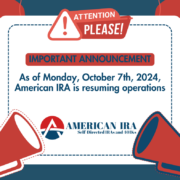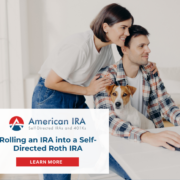What are the Common Pitfalls of Self-Directed Roth IRAs
Self-Directed Roth IRAs are a powerful retirement savings tool that can provide investors with the ability to invest in a wide range of assets that may not be available with traditional IRA investments. While there are many benefits to Self-Directed Roth IRAs, there are also some common pitfalls that investors should be aware of before getting started. In this post, we’ll explore some of these pitfalls and provide tips on how to avoid them.
Avoiding the Risk of Fraud with Self-Directed Roth IRAs
One of the most significant pitfalls of Self-Directed Roth IRAs is the risk of fraud. Because Roth IRAs allow investors to invest in a wide range of assets, some unscrupulous promoters may try to take advantage of investors by offering fraudulent or speculative investment opportunities. In other words, they know you have money—and they’re coming after it! It’s a bit like ID theft that way, in that the modern digital world can make people easy targets. This risk can be especially high when investing in alternative assets like real estate, private equity, or cryptocurrency.
To avoid falling victim to fraud, it’s important to thoroughly vet any investment opportunity before investing. This includes conducting due diligence on the investment sponsor, researching the investment opportunity, and seeking advice from qualified professionals like attorneys, accountants, or financial advisors. Additionally, avoid investing in anything that seems too good to be true. Every legitimate investment, for example, will carry some element of risk. Beware the empty promises.
Complexity and Lack of Liquidity
Another potential pitfall of Self-Directed Roth IRAs is the complexity and lack of liquidity associated with many alternative investments. Unlike traditional IRA investments like stocks, bonds, and mutual funds, many alternative investments can be complex and difficult to understand. Additionally, some investments like real estate or private equity may be illiquid, meaning they can’t be easily sold or converted to cash.
To avoid these issues, it’s important to invest in assets that you understand well, especially if you have an established track record with these assets. It’s also essential to maintain a diversified investment portfolio that includes a mix of traditional and alternative investments to help mitigate risk.
High Fees—And How to Avoid Them
Another common pitfall of Self-Directed Roth IRAs is the potential for high fees. Because Self-Directed Roth IRAs involve investing in a wide range of assets, there may be additional fees associated with managing and administering these investments. These fees can quickly add up and eat into investment returns, making it essential to be mindful of costs when investing in a Self-Directed Roth IRA.
However, with American IRA, you can use static fees to make sure that as your account grows, your fees don’t necessarily grow with it.
Roth IRAs can be a powerful tool for investors looking to take control of their retirement savings and invest in a wide range of assets. However, it’s essential to be aware of the potential pitfalls that come with Self-Directed IRA investing, including the risk of fraud, complexity and lack of liquidity, and high fees—depending on which custodian you choose. To avoid these pitfalls, conduct thorough due diligence on any investment opportunity. By following these tips, investors can make the most of their Self-Directed Roth IRA investments and achieve their retirement savings goals.
Interested in learning more about Self-Directed IRAs? Contact American IRA, LLC at 866-7500-IRA (472) for a free consultation. Download our free guide or visit us online at https://americanira.com/.











